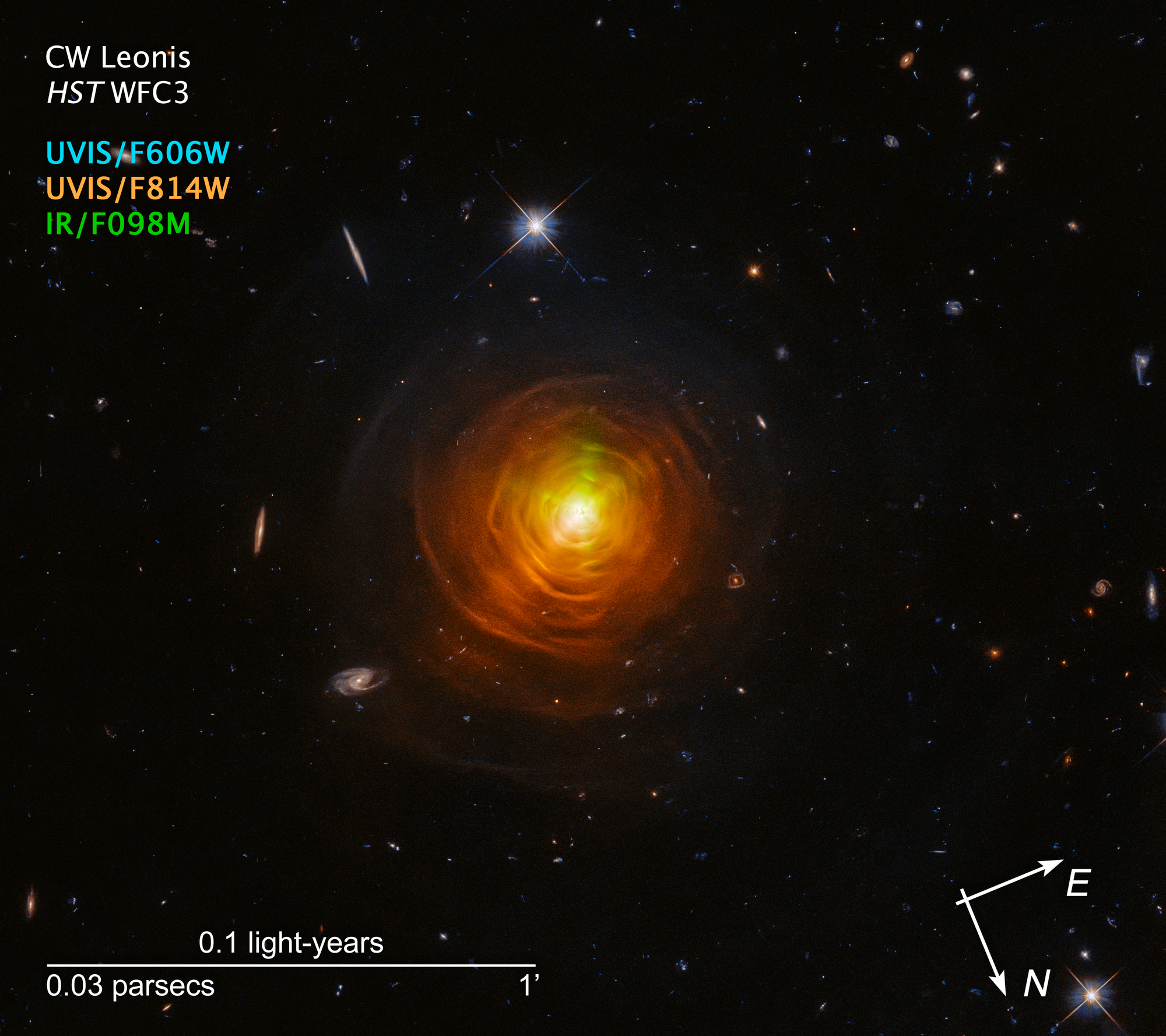Space News
Hubble Celebrates Halloween With A Glowering, Dying Star red giant star CW Leonis

The dying star CW Leonis, a red giant and the most colorful variable in our galaxy, has an eerie atmosphere that resembles something out of Halloween tales. The wispy webbing around its massive body suggests spiders with beaming light coming through their webs as they cook up soot for breakfast – this is carbon from nuclear fusion at work deep within! As life winds down inside these giants before it runs out, energy sources like hydrogen gas become Interstellar Scraps. Nestled in the center of an orange web, this aging star appears to be trapped. Beams of light shine through its dusty exterior as it runs out of fuel and “burps” sooty carbon shells into space that will eventually form streams around other stars billions of more years from now.
The Hubble Space Telescope’s photos are always breathtaking, but this one takes the cake. It is of a red giant star known as CW Leonis, just in time for celebrating Halloween with eerie celestial sights created from sooty carbon flung out into space by its dying guts which provide raw material for future stars and planets all across our galaxy!

The aging red giant CW Leonis is a sight to see as it relentlessly sheds its outer layers. This process, called photodissociation, ejects dusty shells filled with carbon gas into space, where it will eventually be rematerialized by surrounding stars or incorporated back on Earth. The star has been around for four centuries but still shines brightly due in part to converting hydrogen fuel through nuclear fusion reactions at its core–the same process responsible for powering our sun!
In this photo, we can’t help notice how eerie the scene looks like something out of Halloween tale; especially considering that most people associate ghosts and spirits from being trapped inside webs spun solely consisting of threads made up mainly cotton fibers which were used during nighttime rituals among other things such living beings.
The drama of death among stars can be pretty eerie at times. This photo taken by NASA’s Hubble Space Telescope shows the aging red giant CW Leonis, which seems to have been entrapped within wispy orange spider webs that wrap around it like a blanket as beams of light shine through dust and soot-like sunbeams on partly cloudy days when we see our breath before us in winter coats or after taking long walks outside with an air conditioner turned down low overhead. As this star runs out, fuel masses ejecting shells made from raw mat Carbon cooked up inside its core during nuclear fusion process but now become one big nuisance for any pollution controllers because these “burps” contain tons upon tons worths
In today’s
What would you say if I told you that this October 31st, NASA will be celebrating Halloween with creepy celestial sights? The orange-red “cobwebs” are dusty clouds of sooty carbon engulfing the dying star. They were created from CW Leonis being thrown out into the inky black void and cooked up through nuclear fusion inside its epicenter; giving it a rich atmosphere made by all known life on Earth built around Carbon! Blasting these fallen stars back provides raw material for future generations – including ours someday…
CREDITS: RELEASE: ESA/Hubble, NASA, Toshiya Ueta (University of Denver), Hyosun Kim (KASI) MEDIA CONTACT: Ray Villard Space Telescope Science Institute, Baltimore, Maryland Bethany Downer ESA/Hubble.org SCIENCE CONTACT: Toshiya Ueta University of Denver, Denver, Colorado Hyosun Kim Korea Astronomy and Space Science Institute, Daejeon, South Korea
